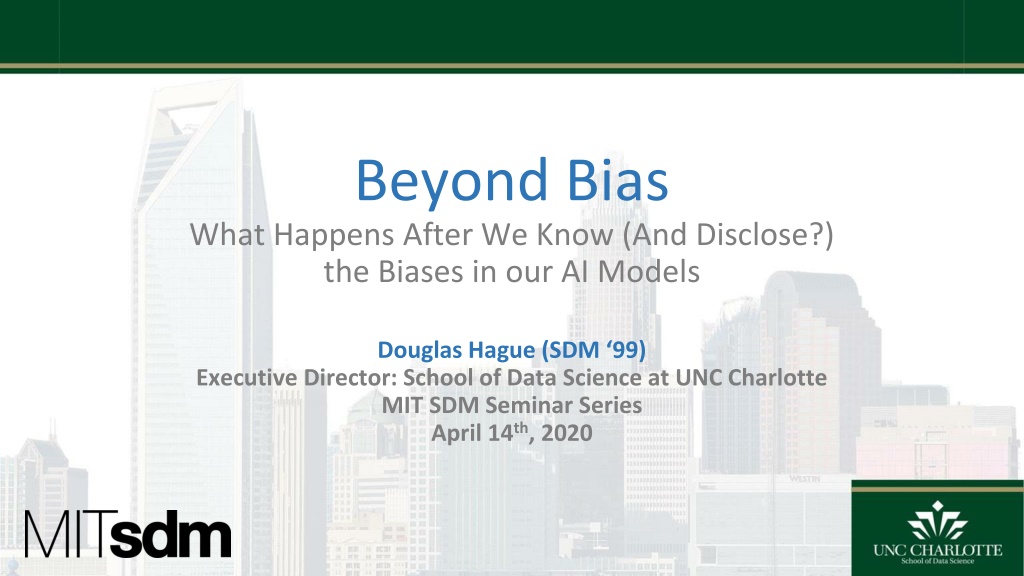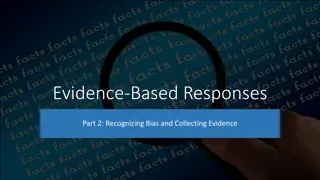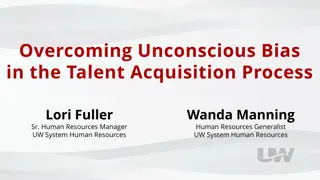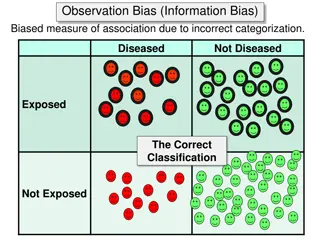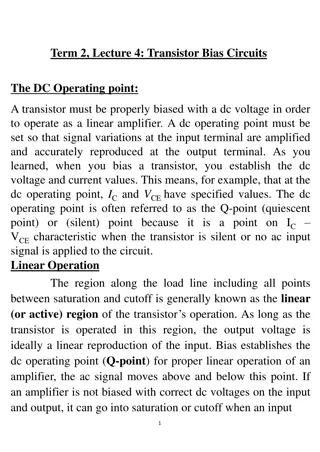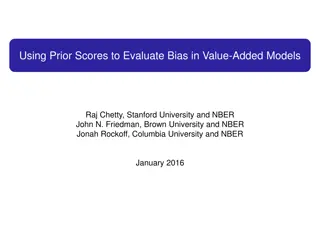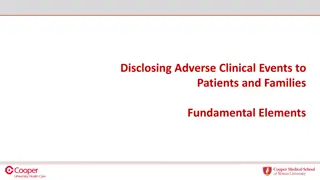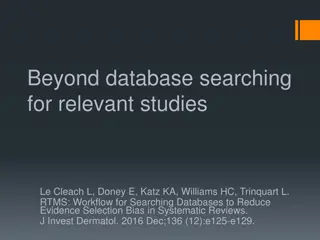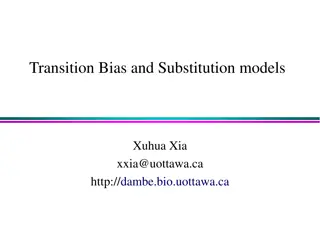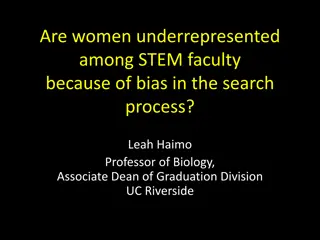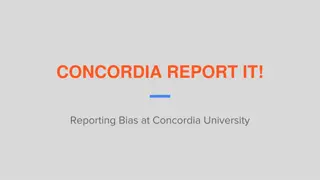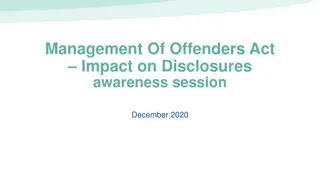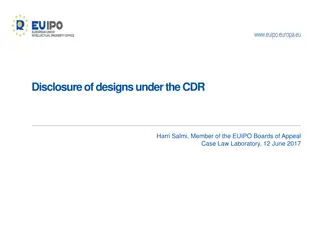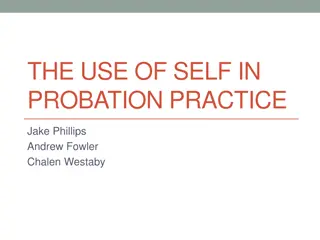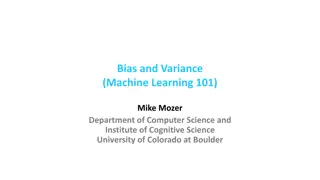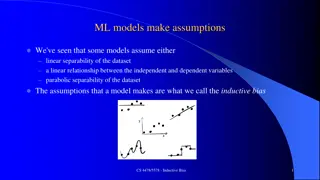Addressing Bias in AI Models Beyond Disclosure
Exploring the impacts of bias in artificial intelligence models and the importance of addressing fairness. Discussions on historical biases, key statistical concepts, and deployment considerations are highlighted. Emphasizes the need for system thinking and societal accountability in AI development.
Download Presentation

Please find below an Image/Link to download the presentation.
The content on the website is provided AS IS for your information and personal use only. It may not be sold, licensed, or shared on other websites without obtaining consent from the author. Download presentation by click this link. If you encounter any issues during the download, it is possible that the publisher has removed the file from their server.
E N D
Presentation Transcript
Beyond Bias What Happens After We Know (And Disclose?) the Biases in our AI Models Douglas Hague (SDM 99) Executive Director: School of Data Science at UNC Charlotte MIT SDM Seminar Series April 14th, 2020
Bias and Fairness in AI: One Hot Topic! Historical: Credit approvals/red lining Heart disease Recent AI: Credit approvals Facial recognition: Joy Buolamwini s research at MIT Criminal justice: recidivism Human resources: resum screening Healthcare services Unfortunately bias and fairness are not new, just amplified.
Two Things to Remember Bias is not the same as fairness System thinking is required
Background Concepts in Statistics #1 Confusion Matrix Measures of Bias Predicted Case Accuracy Sensitivity (true positive rate) Specificity (true negative rate) Precision (positive predicted value) Negative predicted value Miss rate False discovery rate True Positive False Positive Actual Case True Negative False Negative Bias Fairness Fairness driven by social construct
Background Concepts in Statistics #2 In practice, not possible to ensure identical subcategory bias ROC Curve Subcategories Better True Positives True Positives False Positives False Positives
Done! Complete! You now have a model as unbiased as possible Balancing of various biases Balanced input data Tuned thresholds Built separate models Etc. Now you need to deploy
Models Deploy into a Larger System Simplified system with model System or Human Action Model Prediction Data Data Outcome Collection Processing 1 2 Model statistics Data stability Accuracy KPI Subcategory performance Outcome statistics by subcategory
Further Questions for Deployment How to define the system Are you accounting for society in your AI development? What cultural/social frameworks are you expecting What is the interaction with users and impacted groups? How much transparency do you provide? Are there regulatory differences and how do you manage? What systems do you have to monitor your model performance over time?
System Thinking is Critical to Analysis of Fairness Framework for Fair AI* Framing: measurement of model or system Portability: uses not in assumptions/data Formalism: bias fairness Ripple Effect: introduction of model changes system Solutionism: do you really need a model? Trust Privacy Transparency *Modified from Selbst et al.
Framing Use Case: Autonomous Credit ETL and Blending Data Credit Bureau Offer Credit? Accept Offer? Outcome 1 2 Offer in seconds! But wait, I just got fined for bias!? Humans accept/decline offer Reject inference Differential information for select groups Cultural acceptance of debt Time is unstoppable Economic conditions change Individual and group behaviors migrate 2008 Financial Crisis Model Risk Management Fairness is emerging topic in MRM
Framing Human in the Loop Systems ROC Curve Improvement in outcomes! Exogenous variables to model Changing dynamics of system Reintroduction of bias? Mental models often include powerful but biased variables Unconscious bias creeps back in Human Decision True Positives Computer Reject Measurement of outcomes Before AND after human decisions Computer Approve False Positives
Portability Drives Efficiency; Risks Fairness Adjacencies Areas just outside data used during development Areas that are outside of (implicit) assumptions Common data adjacencies Models from literature Geographic areas Client segments Application outside of assumptions Economic conditions Actor behavioral change Cultural norms and regulatory environment change Emergency situations
Formalism: Social Systems Disagree! Social systems are people focused Many ways to measure bias Accuracy Sensitivity Specificity Precision Negative predicted value Miss rate False discovery rate Different stakeholder views Focus on different areas of bias May not be mathematical argument Mathematically intractable Possible in ideal case Optimization will involve tradeoffs Now what?
Trustworthy AI* Trust in the general public is hard Transparency When and how to disclose and ensure awareness Explainability/Traceability Privacy Knowledge of use Right to be forgotten Ownership PII, PPI Anonymization Human agency Robustness, security, and safety Accountability Societal and environmental wellbeing *Based on EU s Ethics Guidelines for Trustworthy AI
Optimize Fairness Think about the system Are you balancing risks as well as rewards? Have you checked for not only bias, but fairness? How have you framed the system? Stakeholders, users, and impacted groups? Culturally sensitive in use broadly defined? Geographically ok? How will you monitor model behavior and fairness over time? Performance? Use and portability? How much transparency is appropriate/necessary?
Other Interesting Topics in Fair AI Intentional bias for social good Model Risk Management (MRM) Methods for removing bias from models Specific cultural implications and social expectations Moral basis for decisions (AI or not)
Two Things to Remember Bias is not the same as fairness System thinking is required
References A Selbst, D Boyd, S Friedler, S Venkatasubramaniam, and J Vertesi, Fairness and Abstraction in Sociotechnical Systems. In FAT* 19. link Ethics Guidelines for Trustworthy AI link Princeton Case Studies on Ethical AI link J Buolamwini, Gender Shades: Intersectional Phenotypic and Demographic Evaluation of Face Datasets and Gender Classifiers, MS MIT 2017 link J Kleinberg, S Mullainathan, and M Raghavan, Inherent Trade-Offs in the Fair Determination of Risk Scores, 2016 link J Silberg and J Manyika, Notes from the AI frontier: Tackling bias in AI (and in Humans) 2019. link D Hague, Benefits, Pitfalls, and Potential Bias in Health Care AI, North Carolina Medical Journal, 2019 link Hundreds more . 1. 2. 3. 4. 5. 6. 7. 8.
Thank you! dhague@uncc.edu dhague@alum.mit.edu
